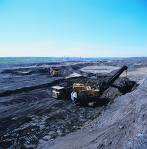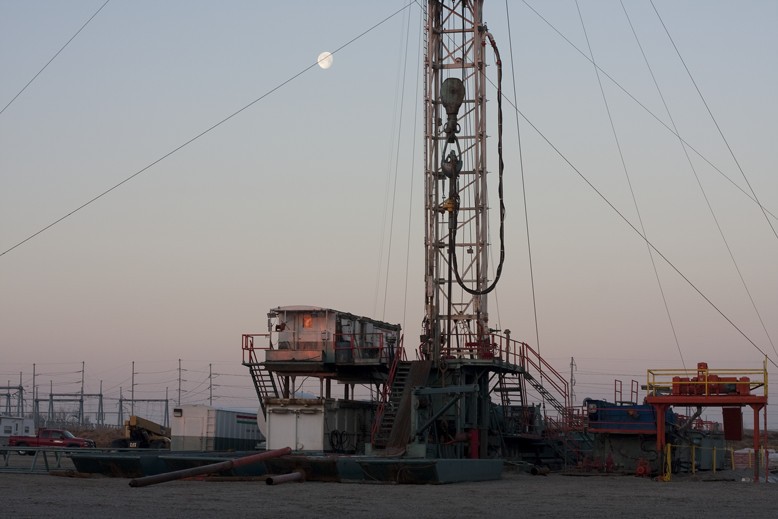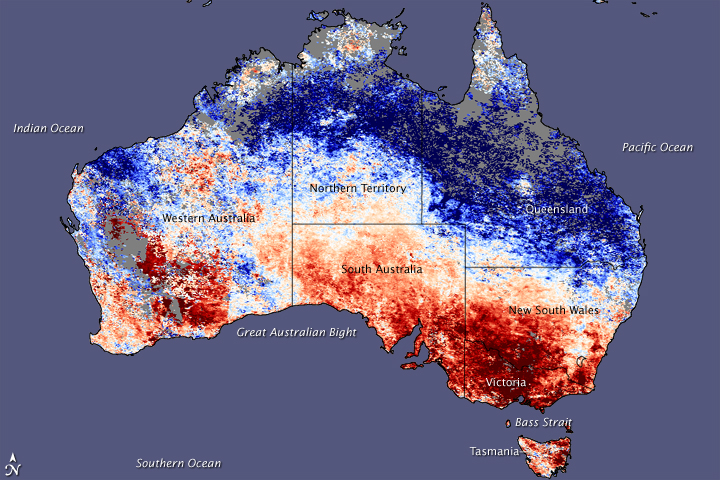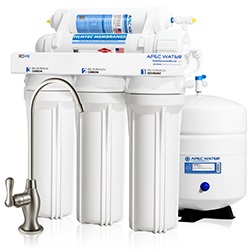While the world drowns in people. The problems with greenhouse gases, ice melt and oceanic acidification, often lumped together under the term Global Warming, are really the end result of world over population. We are 7 billion now and before it is all over we wlll top out at 10 billion. The Earth only has the sustainable resources to support about a billion people well. Had we limited ourselves to that number, we would have eliminated most poverty and most disease. To do that would fly in the face of every religion known to man and everyone’s biological urge to reproduce. So we blindly let nature do it for us. I have no idea what a human biological die off looks like, and I do not want to be here for it. It will happen.
Dyson
http://www.edge.org/3rd_culture/dysonf07/dysonf07_index.html
My first heresy says that all the fuss about global warming is grossly exaggerated. Here I am opposing the holy brotherhood of climate model experts and the crowd of deluded citizens who believe the numbers predicted by the computer models. Of course, they say, I have no degree in meteorology and I am therefore not qualified to speak. But I have studied the climate models and I know what they can do. The models solve the equations of fluid dynamics, and they do a very good job of describing the fluid motions of the atmosphere and the oceans. They do a very poor job of describing the clouds, the dust, the chemistry and the biology of fields and farms and forests. They do not begin to describe the real world that we live in. The real world is muddy and messy and full of things that we do not yet understand. It is much easier for a scientist to sit in an air-conditioned building and run computer models, than to put on winter clothes and measure what is really happening outside in the swamps and the clouds. That is why the climate model experts end up believing their own models.
Revelle
http://www.aip.org/history/climate/Revelle.htm
In the mid 1950s, not many scientists were concerned that humanity was adding carbon dioxide gas ( CO2) to the atmosphere by burning fossil fuels. The suggestion that this would change the climate had been abandoned decades earlier by nearly everyone. A particularly simple and powerful argument was that the added gas would not linger in the air. Most of the CO2 on the surface of the planet was not in the tenuous atmosphere, but dissolved in the huge mass of water in the oceans. Obviously, no matter how much more gas human activities might pour into the atmosphere, nearly all of it would wind up safely buried in the ocean depths
Dyson
http://en.wikipedia.org/wiki/Freeman_Dyson
Global warming
Dyson agrees that anthropogenic global warming exists, and has written
| “ |
One of the main causes of warming is the increase of carbon dioxide in the atmosphere resulting from our burning of fossil fuels such as oil and coal and natural gas.
|
” |
However, he has argued that existing simulation models of climate fail to account for some important factors, and hence the results will contain too much error to reliably predict future trends.
| “ |
The models solve the equations of fluid dynamics, and they do a very good job of describing the fluid motions of the atmosphere and the oceans. They do a very poor job of describing the clouds, the dust, the chemistry and the biology of fields and farms and forests. They do not begin to describe the real world we live in…
|
” |
| “ |
As a scientist I do not have much faith in predictions. Science is organised unpredictability. The best scientists like to arrange things in an experiment to be as unpredictable as possible, and then they do the experiment to see what will happen. You might say that if something is predictable then it is not science. When I make predictions, I am not speaking as a scientist. I am speaking as a story-teller, and my predictions are science-fiction rather than science.
|
” |
He is among signatories of a letter to the UN criticizing the IPCC [1]. The letter includes the statements “The average rate of warming of 0.1 to 0. 2 degrees Celsius per decade recorded by satellites during the late 20th century falls within known natural rates of warming and cooling over the last 10,000 years” and “there has been no net global warming since 1998”. Both statements have been criticised as inconsistent with the data.
He has also argued against the ostracisation of scientists whose views depart from the acknowledged mainstream of scientific opinion on climate change, stating that heretics have historically been an important force in driving scientific progress.
Revelle
http://en.wikipedia.org/wiki/Roger_Revelle
Global warming
Revelle was instrumental in creating the International Geophysical Year (IGY) in 1958 and was founding chairman of the first Committee on Climate Change and the Ocean (CCCO) under the Scientific Committee on Ocean Research (SCOR) and the International Oceanic Commission (IOC). During planning for the IGY, under Revelle’s directorship, SIO participated in and later became the principal center for the Atmospheric Carbon Dioxide Program. In July 1956, Charles David Keeling joined the SIO staff to head the program, and began measurements of atmospheric carbon dioxide at the Mauna Loa Observatory on Mauna Loa, Hawaii, and in Antarctica.
In 1957, Revelle co-authored a paper with Hans Suess that suggested that the Earth’s oceans would absorb excess carbon dioxide generated by humanity at a much slower rate than previously predicted by geoscientists, thereby suggesting that human gas emissions might create a “greenhouse effect” that would cause global warming over time.[3] Although other articles in the same journal discussed carbon dioxide levels, the Suess-Revelle paper was “the only one of the three to stress the growing quantity of CO2 contributed by our burning of fossil fuel, and to call attention to the fact that it might cause global warming over time.”[4]
Revelle and Suess described the “buffer factor”, now known as the “Revelle factor“, which is a resistance to atmospheric carbon dioxide being absorbed by the ocean surface layer posed by bicarbonate chemistry. Essentially, in order to enter the ocean, carbon dioxide gas has to partition into one of the components of carbonic acid: carbonate ion, bicarbonate ion, or protonated carbonic acid, and the product of these many chemical dissociation constants factors into a kind of back-pressure that limits how fast the carbon dioxide can enter the surface ocean. Geology, geochemistry, atmospheric chemistry, ocean chemistry … this amounted to one of the earliest examples of “integrated assessment”, which 50 years later became an entire branch of global warming science.
Al Gore mentions Revelle as a personal inspiration in a segment of the Academy Award-winning global-warming documentary An Inconvenient Truth.
Dyson
http://wattsupwiththat.com/2009/03/25/freeman-dyson-speaking-out-on-global-warming/
What may trouble Dyson most about climate change are the experts. Experts are, he thinks, too often crippled by the conventional wisdom they create, leading to the belief that “they know it all.” The men he most admires tend to be what he calls “amateurs,” inventive spirits of uncredentialed brilliance like Bernhard Schmidt, an eccentric one-armed alcoholic telescope-lens designer; Milton Humason, a janitor at Mount Wilson Observatory in California whose native scientific aptitude was such that he was promoted to staff astronomer; and especially Darwin, who, Dyson says, “was really an amateur and beat the professionals at their own game.”IT WAS FOUR YEARS AGO that Dyson began publicly stating his doubts about climate change. Speaking at the Frederick S. Pardee Center for the Study of the Longer-Range Future at Boston University, Dyson announced that “all the fuss about global warming is grossly exaggerated.” Since then he has only heated up his misgivings, declaring in a 2007 interview with Salon.com that “the fact that the climate is getting warmer doesn’t scare me at all” and writing in an essay for The New York Review of Books, the left-leaning publication that is to gravitas what the Beagle was to Darwin, that climate change has become an “obsession” — the primary article of faith for “a worldwide secular religion” known as environmentalism. Among those he considers true believers, Dyson has been particularly dismissive of Al Gore, whom Dyson calls climate change’s “chief propagandist,” and James Hansen, the head of the NASA Goddard Institute for Space Studies in New York and an adviser to Gore’s film, “An Inconvenient Truth.” Dyson accuses them of relying too heavily on computer-generated climate models that foresee a Grand Guignol of imminent world devastation as icecaps melt, oceans rise and storms and plagues sweep the earth, and he blames the pair’s “lousy science” for “distracting public attention” from “more serious and more immediate dangers to the planet.”http://www.pubmedcentral.nih.gov/articlerender.fcgi?artid=33716
In 1975 Roger returned to UCSD to become Professor of Science and Public Policy. For the next 15 years he taught courses in marine policy and population, and he continued to be active in oceanographic affairs. When in 1978 the American Association for the Advancement of Science (AAAS) decided to focus its international efforts on a few selected issues, Roger chaired the AAAS group that identified the build-up of heat-absorbing gases in the atmosphere as one such issue. As a result, the AAAS Board created the Committee on Climate, and Roger served as its chairman for a decade. The Committee was responsible for the first effort to identify the costs and benefits of increased atmospheric carbon dioxide.
He received the National Medal of Science from President George Bush in 1991
for his pioneering work in the areas of carbon dioxide and climate modifications, oceanographic exploration presaging plate tectonics, and the biological effects of radiation in the marine environment, and studies of population growth and global food supplies.
To a reporter asking why he got the medal, Roger (10) said, “I got it for being the grandfather of the greenhouse effect.”
It is difficult to do justice to a man with such broad accomplishments. When questioned about his profession, Roger would reply “I am an oceanographer.”
FINALLY
Dyson
http://www.boingboing.net/2008/05/27/freeman-dyson-on-glo.html
At this point I return to the Keeling graph, which demonstrates the strong coupling between atmosphere and plants. The wiggles in the graph show us that every carbon dioxide molecule in the atmosphere is incorporated in a plant within a time of the order of twelve years. Therefore, if we can control what the plants do with the carbon, the fate of the carbon in the atmosphere is in our hands. That is what Nordhaus meant when he mentioned “genetically engineered carbon-eating trees” as a low-cost backstop to global warming. The science and technology of genetic engineering are not yet ripe for large-scale use. We do not understand the language of the genome well enough to read and write it fluently. But the science is advancing rapidly, and the technology of reading and writing genomes is advancing even more rapidly. I consider it likely that we shall have “genetically engineered carbon-eating trees” within twenty years, and almost certainly within fifty years.
Carbon-eating trees could convert most of the carbon that they absorb from the atmosphere into some chemically stable form and bury it underground. Or they could convert the carbon into liquid fuels and other useful chemicals. Biotechnology is enormously powerful, capable of burying or transforming any molecule of carbon dioxide that comes into its grasp. Keeling’s wiggles prove that a big fraction of the carbon dioxide in the atmosphere comes within the grasp of biotechnology every decade. If one quarter of the world’s forests were replanted with carbon-eating varieties of the same species, the forests would be preserved as ecological resources and as habitats for wildlife, and the carbon dioxide in the atmosphere would be reduced by half in about fifty years.
It is likely that biotechnology will dominate our lives and our economic activities during the second half of the twenty-first century, just as computer technology dominated our lives and our economy during the second half of the twentieth. Biotechnology could be a great equalizer, spreading wealth over the world wherever there is land and air and water and sunlight. This has nothing to do with the misguided efforts that are now being made to reduce carbon emissions by growing corn and converting it into ethanol fuel. The ethanol program fails to reduce emissions and incidentally hurts poor people all over the world by raising the price of food. After we have mastered biotechnology, the rules of the climate game will be radically changed. In a world economy based on biotechnology, some low-cost and environmentally benign backstop to carbon emissions is likely to become a reality.
Revelle
http://www.heartland.org/policybot/results/9858/Gores_global_warming_mentor_in_his_own_words.html
Revelle had made an even stronger statement just a few days earlier, in a July 14, 1988 letter to Congressman Jim Bates: “Most scientists familiar with the subject are not yet willing to bet that the climate this year is the result of ‘greenhouse warming.’ As you very well know, climate is highly variable from year to year, and the causes of these variations are not at all well understood. My own personal belief is that we should wait another ten or twenty years to really be convinced that the greenhouse effect is going to be important for human beings, in both positive and negative ways.”
Revelle’s writings
In the premiere issue of Cosmos, in 1991, Revelle and coauthors S.F. Singer and C. Starr contributed a brief essay, “What to do about greenhouse warming: Look before you leap.” The three write: “Drastic, precipitous and, especially, unilateral steps to delay the putative greenhouse impacts can cost jobs and prosperity and increase the human costs of global poverty, without being effective.”
They continue, “Stringent controls enacted now would be economically devastating, particularly for developing countries for whom reduced energy consumption would mean slower rates of economic growth without being able to delay greatly the growth of greenhouse gases in the atmosphere. Yale economist William Nordhaus, one of the few who have been trying to deal quantitatively with the economics of the greenhouse effect, has pointed out that ‘. . . those who argue for strong measures to slow greenhouse warming have reached their conclusion without any discernible analysis of the costs and benefits.’”
:}
Dyson’s most remarkable quote is that, “I would rather be wrong than vague”.
To which I would respond, “Sir I would rather be right than dead”.
:}
 on 12. 9.05
on 12. 9.05





 :}
:}









